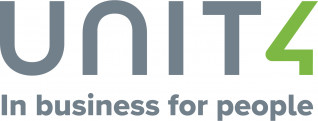
Part 2 – Clearly outline when the employee is considered to be in the physical work environment and when they are not.
In our last article we noted that Covid-19 changed the way many organizations do business and organizations have had to learn how to navigate the many challenges of remote work: lack of face-to-face supervision, keeping employees engaged and motivated and managing the work environment are just some of the challenges with remote work. During the pandemic, many employers shifted to a full or hybrid remote work arrangement, but with COVID restrictions being lifted and life slowly returning to the pre-pandemic norm, what was just a temporary measure necessitated by the COVID pandemic is becoming a more permanent arrangement by choice.
Whether you choose to adapt to a fully remote workforce or a hybrid remote work arrangement, employee’s activities while working remotely should be subject to the same standards that are applied at the organization’s offices regarding confidentiality, security, quality, and access to business documents just to name a few. In addition, an employer must continue to comply with applicable employment legislation and continue to ensure the health and safety of employees to minimize the risks of workplace injuries while working remotely. To help minimize liabilities, employers who are considering implementing a permanent remote work arrangement should ensure that they establish and implement a clear remote work policy along with a well drafted remote work agreement between the employer and the employees.
In Part 1 we talked about these key areas to consider when creating a remote work policy; Availability and Hours of Work, Physical Environment & Security. Here are some additional areas to consider when creating a remote work policy.
Client Confidentiality
Some employer’s client information may be particularly sensitive. Customers have a right (both legal and moral) to expect their confidential information to be protected. Employees who are working remotely should be reminded of their obligation to take appropriate precautions to ensure that confidential information not be exposed to third parties, including family members, visitors or any other persons residing, working or simply present at the remote work location.
Health and Safety
The remote work location is an extension of the physical office. While the Ontario Health and Safety Act appears explicitly to not apply to work performed by the owner or occupant in or about a private residence, the employer should practice due diligence and it would still be considered best practice to direct employees to observe all applicable health and safety policies when working remotely.
Remote work may also be conducted in locations other than the employee’s home. This could be highlighted in the policy and employees reminded that they could consult with their health and safety representative (if applicable) in respect of best practices in setting up a remote-work location. Employers continue to be responsible to take every reasonable precaution to protect the well-being of their employees. And in the context of a “distributed workplace” employers should be clear about the employer’s and employee’s shared responsibility to ensure a safe workplace.
Injuries sustained at the employees’ homes would be treated as a workplace-related injury, so it is imperative that organizations continue to manage health and safety for employees who are working from home. To minimize the health and safety risks associated with working from home employers should ensure that the remote-work policy covers the following:
- Define the workplace. Where does the workplace extend to and how does the workplace extend into the employee’s home?
- Clearly outline when the employee is considered to be in the physical work environment and when they are not.
- Be clear about break times and ensure that employees understand that breaks are time away from work.
- Employees should be made aware that just as they are expected to maintain a safe work area free of safety hazards while in the office environment, they are required to do the same in their home workspace.
Confusion of expectations and disconnections between employees and employers from not having a clear remote work policy can result in undue risk to both parties. An effective remote work policy should establish the guidelines and expectations for performance while working remotely, along with providing a framework for monitoring and addressing situations of non-compliance. By doing so the employer may enjoy a competitive edge, even during trying and difficult times, as they provide employees the opportunity to continue to contribute to the organization’s ongoing success in an evolving understanding of how work gets done.
By Adrian Johnson, ASSOCIUM Consultants
Through our collaborative approaches, innovative HR products and customized advisory solutions we impact four leadership priorities: managing risk, driving productivity, strengthening talent capabilities and supporting your bottom line.
Let’s connect to find out how ASSOCIUM Consultants can help your organization.




.png)



